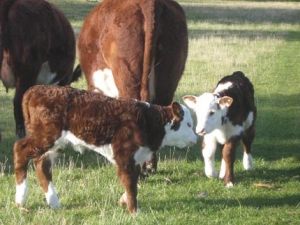The common disease of Dairy cows and treatments
Enzootic bovine leucosis (EBL)

Overview
| Cause |
Bovine leukaemia virus |
|---|---|
| Description |
Cattle and buffalo are the only animals infected naturally with this virus. A small proportion of infected cattle develop lymphoid tumours affecting all body systems. EBL is a notifiable disease under legislation and all suspect cases in animals should be reported to Biosecurity Queensland, DPI&F. |
| Where the disease occurs |
EBL is found worldwide and is widespread in dairying areas. In 1983 it was estimated that around 70% of Queensland´s dairy herds and 14% of animals in the herds were infected. Since then, a voluntary control scheme has eliminated most infection from Queensland dairy herds. |
| The disease in animals |
Infected cattle may show no clinical signs during their lifetime. Once infection is established, it is permanent and no spontaneous recovery has been shown. In animals that develop clinical signs the main signs are loss of condition, lack of appetite, anaemia and weakness. The temperature is usually normal unless tumour growth is rapid. Tumours often involve the superficial lymph nodes and are easily visible. Once signs are observed and tumour growth detectable, then death normally occurs in 2-3 weeks. |
| Spread of the disease |
About 4-8% of infections can be accounted for by transmission of the virus from a cow to her calf before birth. The calf can also become infected after birth by drinking milk that contains blood from wounds in the teats or when a cow has mastitis. The disease also spreads between animals whenever there is contact with the blood of an infected animal, for example blood from wounds. Biting insect vectors are known to spread the disease. Blood sampling and vaccination using common syringes and needles, dehorning and other procedures which re-use the same equipment and rectal examination of a group of cows, may all spread infection. Semen from infected bulls is NOT infective but a traumatised genital tract of an infected bull could transmit disease at natural service. No transmission to 6-7 day embryos has been found and if embryos are well washed, no transmission to the recipient occurs. |
| Control of the disease in animals |
A voluntary EBL Accreditation Scheme began in Queensland in 1983 and many dairy farmers took advantage of it to clear their herds of this disease. Today there are only a small number of infected herds (less than 0.5% nationally). In order to protect Australia´s future access to international export trade in milk, dairy products and live exports, the Australian dairy industry and animal health authorities are working together to complete the eradication of EBL from the Australian dairy herd. |
| Can people get the disease? |
No. There is no evidence to link the virus, which is killed by pasteurisation, to any human health risk. |























